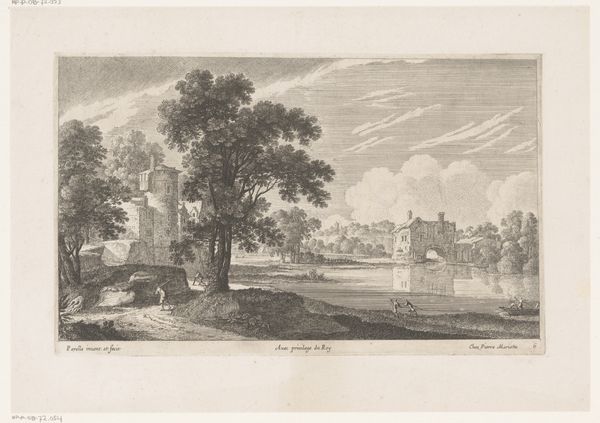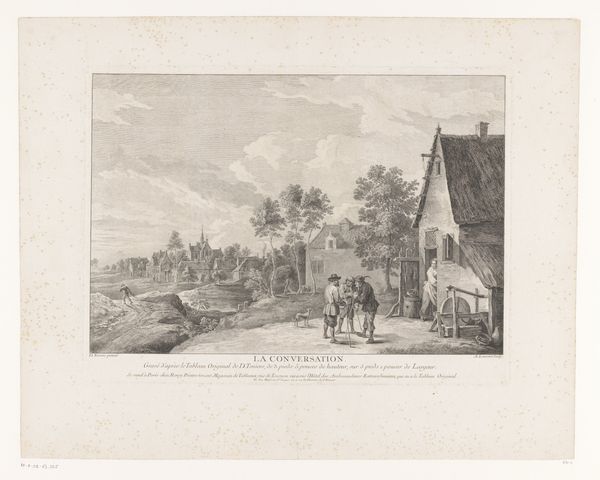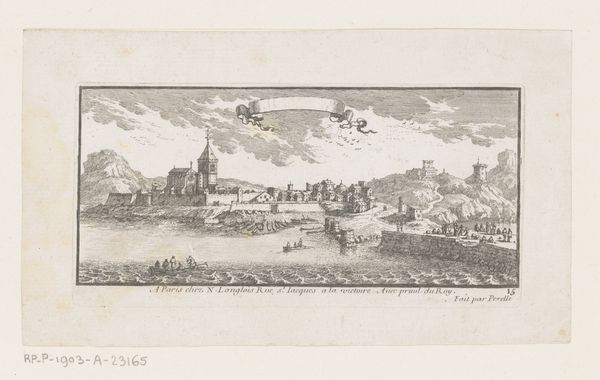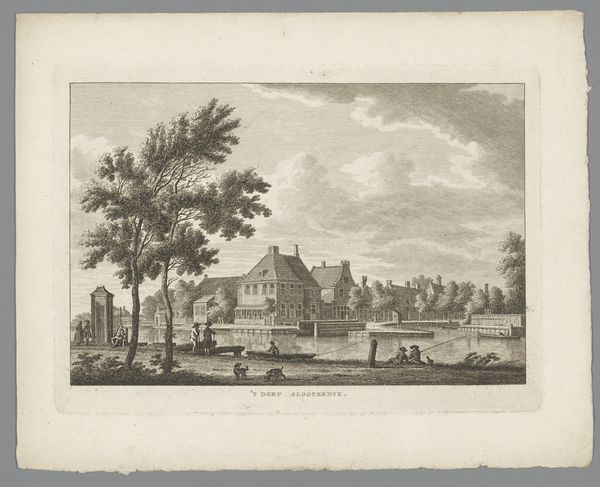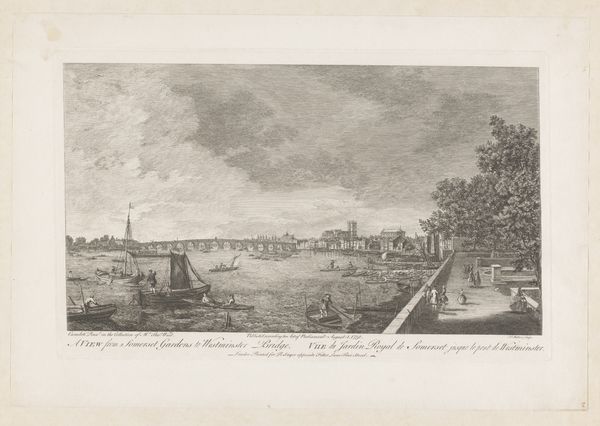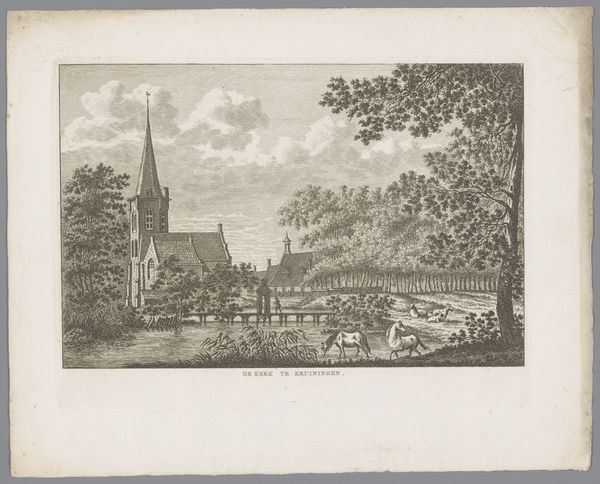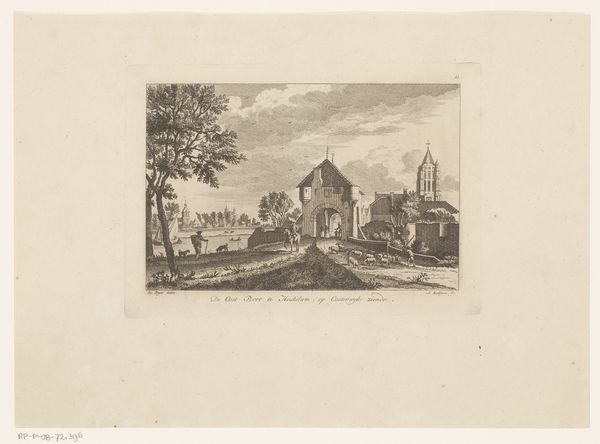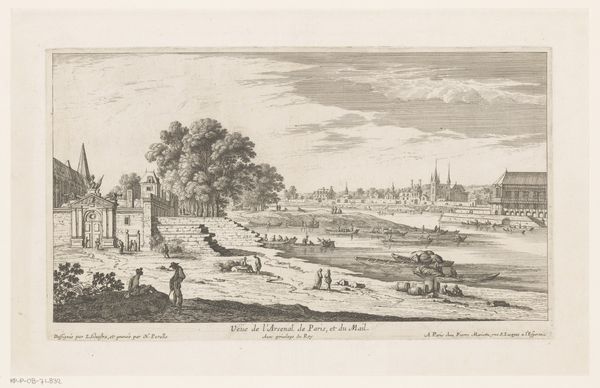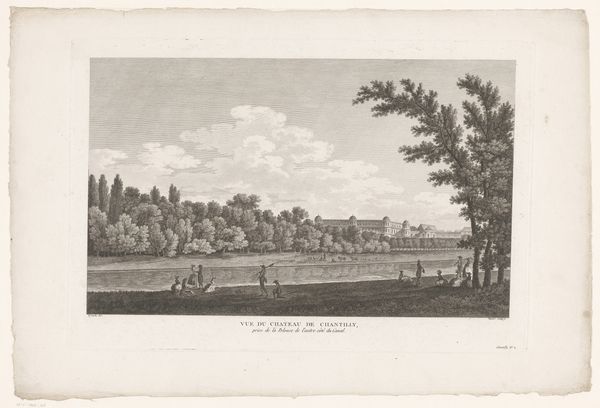
drawing, print, paper, engraving
#
drawing
#
neoclacissism
# print
#
landscape
#
paper
#
engraving
Dimensions: height 175 mm, width 236 mm
Copyright: Rijks Museum: Open Domain
Editor: Here we have "Gezicht op Domburg," created between 1786 and 1792 by Carel Frederik Bendorp, using drawing, printmaking, engraving, and paper. Looking at this landscape scene, I'm struck by how balanced and almost serene it feels. What aspects of its formal construction stand out to you? Curator: Immediately, I observe the meticulous use of line and tonal gradation achieved through engraving. The composition demonstrates a clear understanding of perspective, directing the eye from the foreground figures, along the road, towards the centrally placed church spire. Consider how the artist utilizes the contrasting textures of the foliage and the architecture. How do you interpret this interplay of textures within the composition? Editor: It almost feels intentional to give an image a sense of nature but still create straight lines for the construction. I am wondering if this contrast refers to something about the tension between humans and the natural world? Curator: Indeed, it's productive to consider the spatial relationship and contrast as symbolic rather than strictly mimetic. The calculated arrangement contributes to a reading of structured order. The formal elements create that. Editor: So, it's less about what the artist is showing and more about how they are showing it that conveys a specific message? Curator: Precisely. The very act of composing this landscape, arranging its elements with such deliberateness, speaks to a desire for clarity and control. Editor: It’s been very helpful to consider the artwork based on how the formal elements create meaning. Curator: I agree. Focusing on those internal relationships is key.
Comments
No comments
Be the first to comment and join the conversation on the ultimate creative platform.

